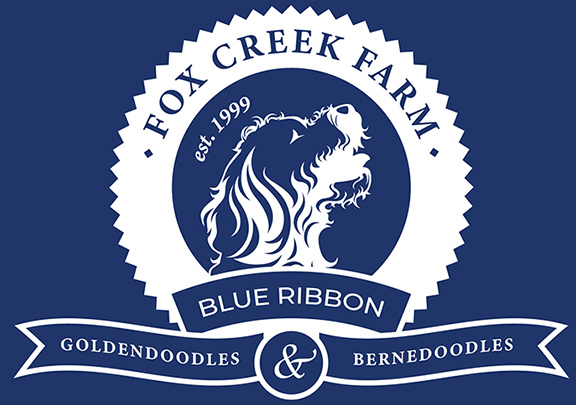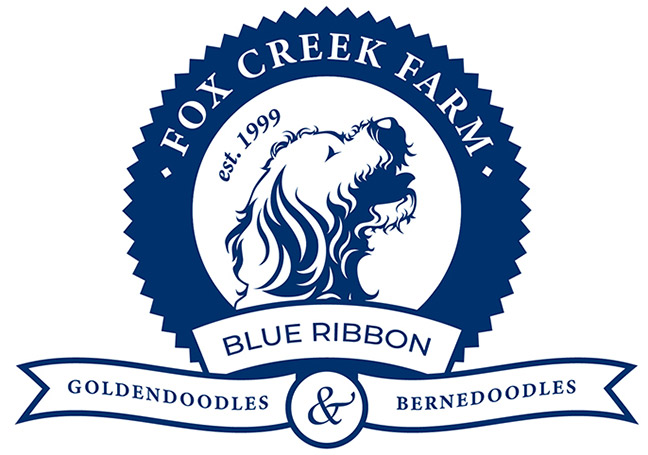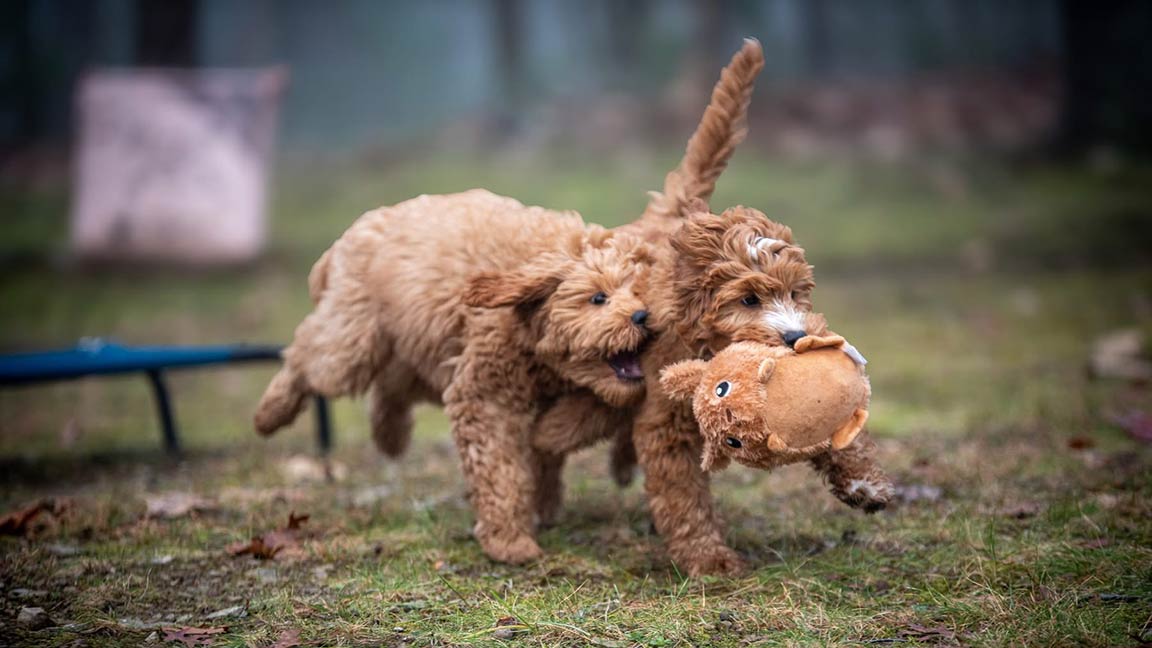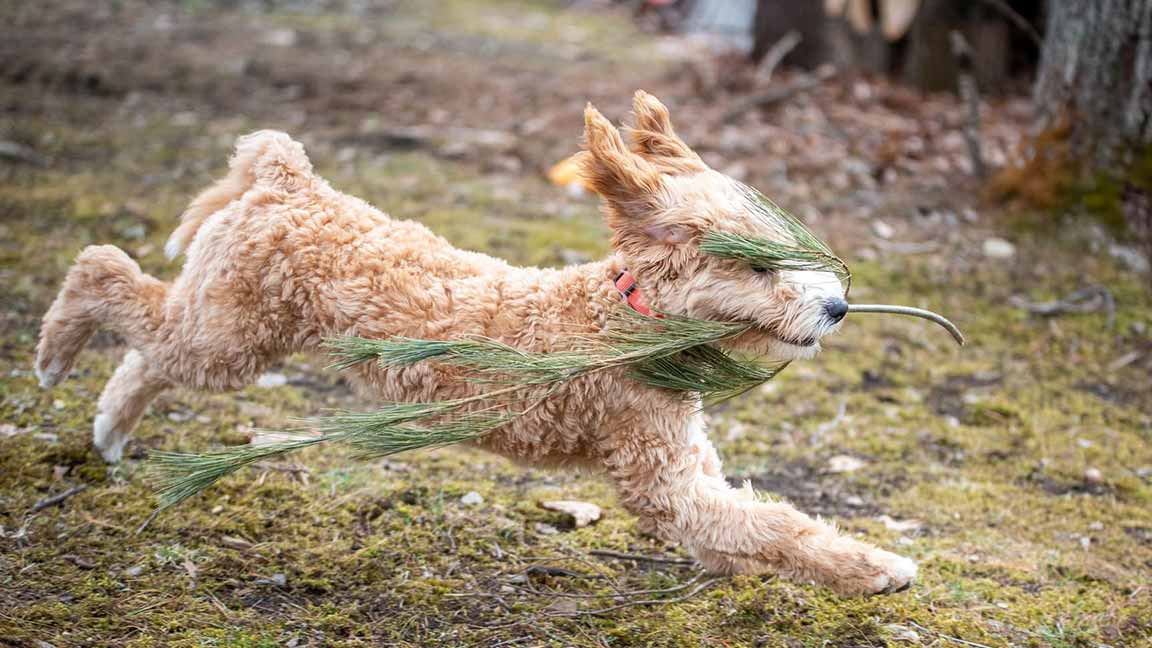
How to Comfort & Care For Your Dog During Fireworks
As the Fourth of July approaches, a sense of excitement fills the air. Families across the country are preparing for a day of barbecues, parades, and of course, the spectacular fireworks display that light up the night sky. However, for many pet owners, particularly those with sensitive breeds like Goldendoodles, this day of celebration can be a source of concern. Fireworks, with their loud booms, crackles, and bright flashing lights, can be incredibly stressful for dogs. This is especially true for puppies who may be experiencing these overwhelming sights and sounds for the first time. The fear and anxiety caused by fireworks can lead to various distressing behaviors in dogs, from hiding and shaking to escape attempts. This article aims to provide a comprehensive guide filled with effective strategies and practical tips to help your Goldendoodle stay calm and safe during the fireworks this Fourth of July. Understanding why dogs fear fireworks and learning how to mitigate this fear can ensure a more enjoyable and less stressful holiday for your four-legged family member.
Why Is My Dog Scared of Fireworks?
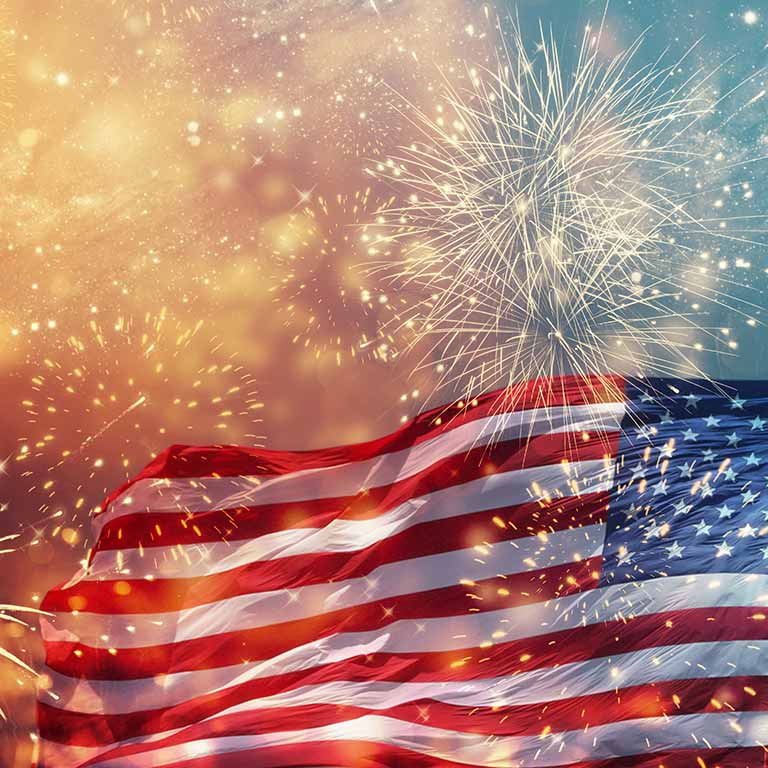 Fireworks can profoundly impact dogs, causing a range of stress-related behaviors. The loud, unexpected noises and bright flashes can trigger a fear response, leading to behaviors that are distressing to witness and pose a risk to your dog’s safety and well-being.
Fireworks can profoundly impact dogs, causing a range of stress-related behaviors. The loud, unexpected noises and bright flashes can trigger a fear response, leading to behaviors that are distressing to witness and pose a risk to your dog’s safety and well-being.
With their sensitive dispositions, Goldendoodles may exhibit signs of distress such as shivering, pacing, whining, or attempting to escape. These behaviors are not just upsetting to witness but can also pose a risk to their safety. For instance, in their panic, they may attempt to run away or hide in potentially dangerous places.
Puppies, still in their formative stages, may also be particularly affected. Their lack of experience with such loud, unfamiliar sounds can make the experience even more overwhelming. Moreover, if their initial experiences with fireworks are negative, it could lead to a long-term fear response. This can manifest in fear of loud noises, not just fireworks, and impact their quality of life.
The impact of fireworks on dogs extends beyond the immediate fear response. The stress and anxiety caused by fireworks can lead to various health issues, including digestive problems, changes in appetite, and even a weakened immune system.
Recognizing the signs of fear from your dog is crucial to helping them navigate the stress of fireworks. Dogs communicate their fear and anxiety in various ways, and understanding these signs can help you provide the necessary support and comfort.
Goldendoodles may show their fear through excessive barking, trembling, or seeking constant comfort from their owners. They may also show signs of restlessness, such as pacing or panting. Some Goldendoodles may try to escape or hide, often in small, enclosed spaces where they feel safe. They may also exhibit changes in their normal behavior, such as loss of appetite or increased clinginess.
Still learning how to communicate their needs, Puppies may show signs of fear through behaviors such as whimpering, hiding, or reluctance to eat or drink. They may also show signs of restlessness, such as pacing or panting. In some cases, puppies may have accidents in the house, even if they are usually house-trained.
It’s important to note that these signs can vary from dog to dog, and understanding your pet’s unique fear responses is critical to providing effective support. For instance, some dogs may become unusually quiet and withdrawn when afraid, while others may become more vocal and agitated.
In addition to these behavioral signs, dogs may also show physical signs of stress. These can include dilated pupils, ears pinned back, tail tucked between the legs, and excessive shedding.
How to Deal with a Stressed Puppy
By recognizing these signs of fear, you can take steps to help your Goldendoodle or puppy feel safer and more comfortable during fireworks. In the following sections, we will discuss various strategies to prepare your dog for fireworks, create a safe space, and use calming techniques to help alleviate their fear. Remember, the goal is not to eliminate the fear but to help your dog manage their anxiety more healthily and safely.
Preparation is critical to helping your dog cope with the noise of fireworks. This involves training, desensitization, and creating positive associations with the sounds of fireworks.
Desensitization is a process that involves gradually exposing your Goldendoodle or puppy to the sounds of fireworks in a controlled and safe environment. This can be done using sound therapy CDs or online videos of fireworks. Start with the volume low and gradually increase it over time as your dog becomes more comfortable. The goal is to help your dog become accustomed to the sounds, reducing their fear response.
Pairing the sounds of fireworks with positive experiences can also help to create a more positive association. For instance, you could play the sounds of fireworks during meal times or while playing with your dog. This can help your dog associate the sounds of fireworks with positive experiences, reducing their fear response.
Training can also be an effective tool in preparing your dog for fireworks. Training your dog with important commands like “sit”, “stay”, and “come” can help you maintain control during fireworks. You can also teach your dog to go to a specific place in your home where they feel safe when they hear loud noises.
Remember, desensitization and training should be done gradually and patiently. It’s important not to rush the process or force your dog to face their fears. This could potentially increase their fear and anxiety. Always end each training session positively, with plenty of praise and rewards.
By preparing your Goldendoodle or puppy in advance, you can help reduce their fear and anxiety during fireworks. The following section will discuss creating a safe and comfortable space for your dog during fireworks.
Calming Techniques and Tools for Puppies During Fireworks
There are various calming techniques and tools available that can help your Goldendoodle or puppy manage their fear of fireworks. These can range from physical products to behavioral techniques to supplements, and what works best will depend on your dog’s needs and responses.
Calming wraps or anxiety wraps are one such tool. These wraps apply gentle, constant pressure to help soothe your dog, like swaddling a baby. They can be particularly effective for dogs that respond well to physical comfort.
Calming treats are another option. These treats often contain ingredients like chamomile and tryptophan, known for their calming effects. They can be given before the fireworks start to help reduce anxiety. Chillax is a very effective calming treat that is used on an as-needed basis. CBD Mega is a product that is given daily, which provides many benefits, including addressing anxiety to help dogs that have multiple stressors such as a vet or groomer visits, thunderstorms, and even car rides.
Thundershirt: A Calming Tool for Dogs
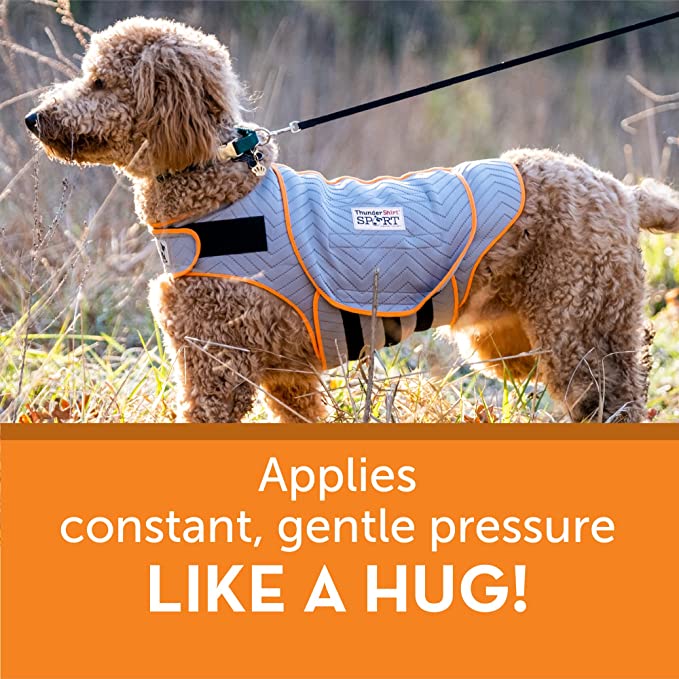 The Thundershirt is a popular tool designed to help soothe anxious dogs. It works on the principle of applying gentle, constant pressure on a dog’s torso, like a comforting hug. This concept is known as deep pressure therapy, which is believed to have a calming effect on the nervous system and is used in various forms across many species, including humans.
The Thundershirt is a popular tool designed to help soothe anxious dogs. It works on the principle of applying gentle, constant pressure on a dog’s torso, like a comforting hug. This concept is known as deep pressure therapy, which is believed to have a calming effect on the nervous system and is used in various forms across many species, including humans.
This pressure can help dogs reduce anxiety and fear during stressful situations, such as fireworks or thunderstorms. The Thundershirt is designed to be easy to wear and adjust for a snug fit, ensuring the pressure is evenly distributed across your dog’s body.
Many pet owners have reported positive results with the Thundershirt, noting that their dogs seem more relaxed and less anxious when wearing it. It’s essential to introduce the Thundershirt to your dog in a calm environment and associate it with positive experiences, such as treats or petting, so your dog views it as a positive thing.
While the Thundershirt can be helpful, it’s not a cure-all and may not work for all dogs. It’s most effective when used as part of a comprehensive approach to managing your dog’s anxiety, which may include behavior modification techniques, environmental changes, and, in some cases, medication.
Distraction techniques can also be effective. This could involve giving your dog a new toy or a puzzle feeder to keep their mind occupied during the fireworks. Engaging your dog in a game or training session can also help distract them from the noise.
In some cases, combining these techniques can be most effective. For example, use a calming wrap while providing a distraction as a puzzle feeder.
It’s important to stay calm and reassure yourself. Dogs often look to their owners for cues on how to react, and if they see that you’re relaxed, it can help them feel more secure.
Professional Help and Medication for Puppies Afraid of Fireworks
If your Goldendoodle or puppy’s fear of fireworks is severe, it may be necessary to seek professional help. An experienced dog trainer or a veterinary behaviorist can provide personalized strategies and support based on your dog’s specific needs and responses. They can guide you through desensitization and counterconditioning and provide additional training techniques to help manage your dog’s fear.
Medication may sometimes be recommended to help manage your dog’s anxiety during fireworks. These medications can range from sedatives to anti-anxiety drugs. It’s essential to consult with a vet before administering any medication to your dog. They can guide the appropriate medication and dosage based on your dog’s size, age, and overall health. However, it is recommended that you first try a holistic approach before utilizing chemical or pharmaceutical products.
Every dog is unique, and what works for one may not work for another. The key is to be patient, understanding, and willing to seek help when needed.
Celebrating the 4th of July with Your Goldendoodle
As we celebrate the Fourth of July, it’s crucial to remember that our festive fireworks can be a source of stress and fear for our four-legged friends. Goldendoodles, with their sensitive nature, and puppies, with their lack of experience, can be particularly affected. However, with understanding, preparation, and the right strategies, we can help them navigate this challenging experience.
From recognizing the signs of fear to creating a safe space, using calming techniques, and knowing when to seek professional help, we can make a significant difference in our dog’s experience. Remember, every dog is unique, and patience and consistency are key in helping them manage their fear.
This Fourth of July, let’s ensure our celebrations include the comfort and safety of our pets. By helping our Goldendoodles and puppies stay calm during the fireworks, we can make the holiday a more enjoyable experience for all family members, both two-legged and four.
